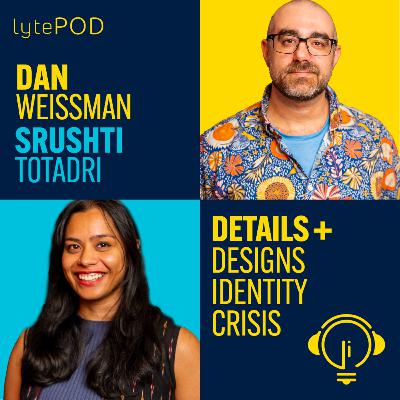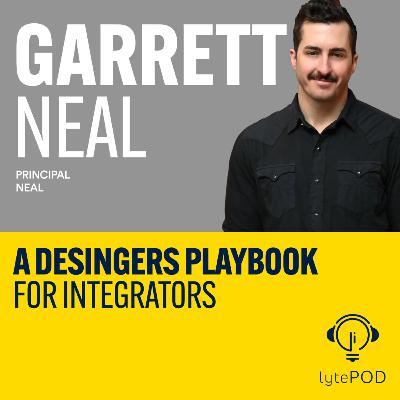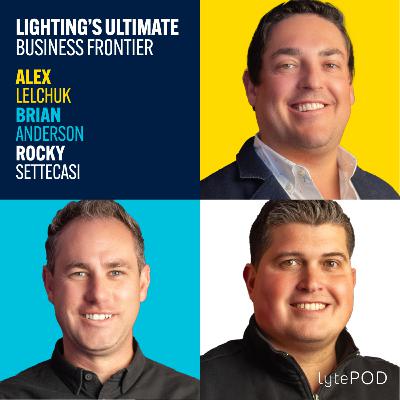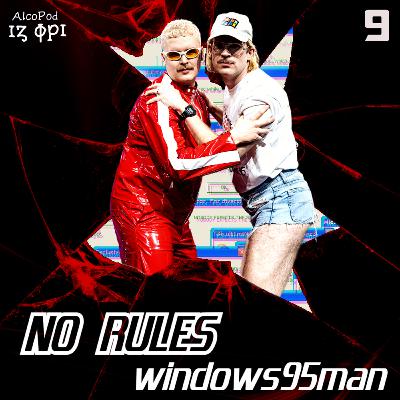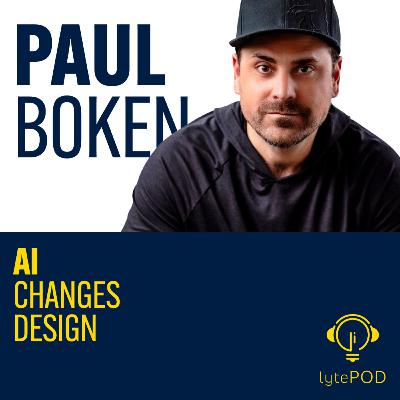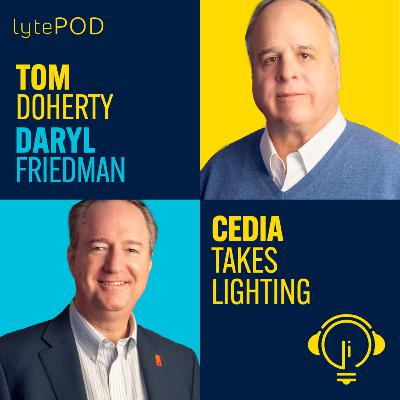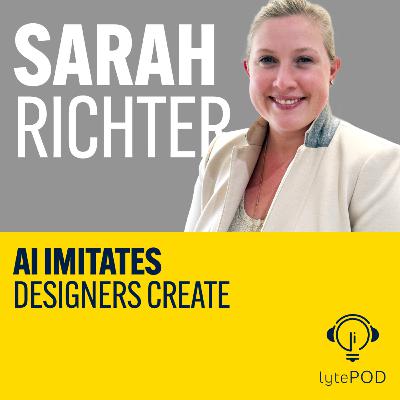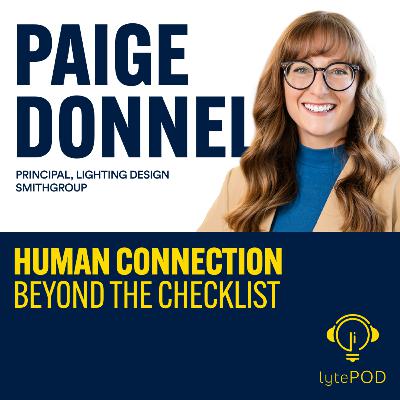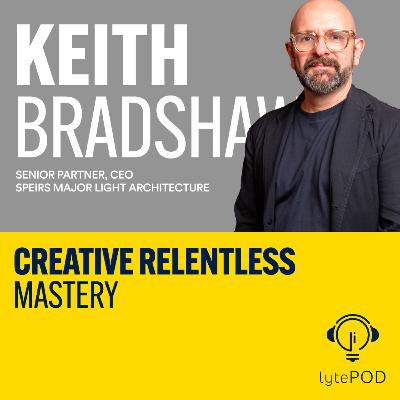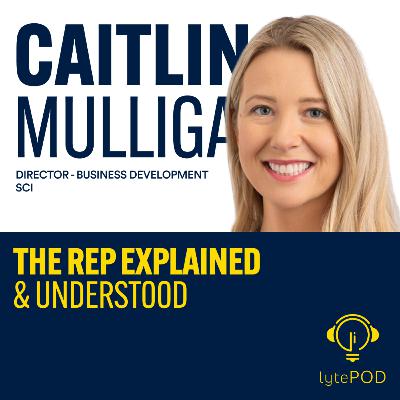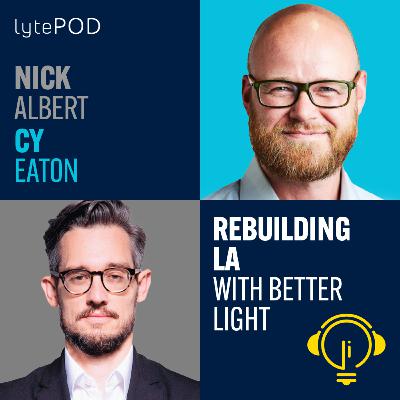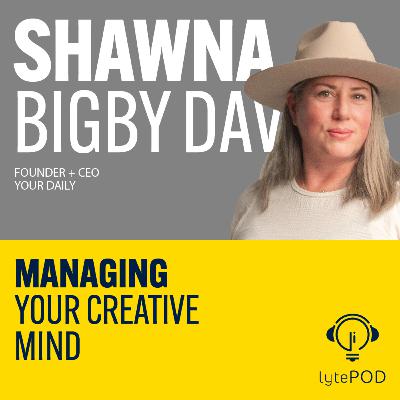Discover LytePod
LytePod

LytePod
Author: Lytei
Subscribed: 7Played: 231Subscribe
Share
© 627647
Description
Diving into the honest, creative, challenging, and fun human part of how design really happens - all with a little love for light along the way. Featuring creative minds who walk into their own story - from designers to manufacturers, innovators, and professors - unpack their vision, ideas, accomplishments, and habits that make it happen!
130 Episodes
Reverse
What happens when the people who control your home's technology realize most homes are getting lighting fundamentally wrong?In this episode of LytePOD, host Sam Koerbel sits down with Richard Millson, a master integrator with nearly 30 years of experience creating seamless smart home experiences for luxury residences. Together, they unpack why most homes — even $30 million estates — fail at lighting design, and how the advent of LED technology has forced integrators to become lighting experts whether they wanted to or not.Richard reveals the uncomfortable truth: most residential projects don't have professional lighting designers involved. The architect, electrician, or builder handles it, not out of malice, but because they genuinely believe "four cans and a fan" is fine. Meanwhile, integrators are left to control whatever shows up on site — fixtures that don't dim properly, don't match in color temperature, or literally leave million-dollar artwork half in shadow. This conversation goes deep into how technology is reshaping the entire lighting industry — from fixtures with built-in intelligence to wireless control systems that let you redesign your lighting after your house is built. Richard shares why his company now specifies fixtures themselves (it's not about the money) and how showing clients what's actually possible with modern lighting creates those "I didn't know my house could look like this" moments.💡 Key insights:• Why LED changed everything — and made lighting exponentially more complex• How intelligence is moving from wall switches to the fixtures themselves• The difference between selling technology and creating experiences• Why integrators and designers need each other more than ever• How to create intuitive control systems that guests can use without training• The future of residential lighting and where the industry is heading Whether you're a designer wondering why integrators suddenly care about your fixture selections, an integrator trying to navigate the lighting landscape, or a homeowner who's ever wondered "what does this switch do?" — this episode reveals what it really takes to get lighting right in luxury homes.Where Richard works: https://millson.net/Join the fun - learn more about Lightapalooza (our sponsor) - https://lightapalooza.com/Listen now to discover why lighting might be the most misunderstood — and most impactful — element in your home.(00:00:00) The Problem: Most Homes Get Lighting Wrong(00:01:27) Richard! (00:03:37) The LED Revolution Changed Everything(00:05:50) From Control to Design: Why Integrators Must Evolve(00:07:40) The Art of Collaboration Without Competition(00:16:07) Educating Clients: The Power of Demonstration(00:23:26) Creating Intuitive User Experiences(00:29:35) The Future: Flexibility and Addressability(00:34:24) Industry Evolution and Consolidation(00:38:01) Lighting as the Gateway to Early Project Involvement
What do billion-dollar developers really think about design — and where does lighting fit in?In this episode, LytePOD host Sam Koerbel sits down with the COO of a luxury real-estate developer in New York City responsible for billions of dollars in projects. Together they unpack the owner’s perspective on budgets, design ambition, and risk — and what happens when lighting becomes the most misunderstood line item on the spreadsheet.This candid, behind-the-scenes conversation reveals how developers make decisions, where designers lose trust, and what it takes to bridge the gap between creativity and construction reality.💬 Topics covered:• How developers evaluate risk, cost, and design value• Why lighting often gets “value-engineered” — and how to prevent it• The balance between aesthetics and ROI in high-end projects• What guardrails and responsibilities do developers have• How a developer can guarantee success on a project (spoiler alert: belief, conviction, and a team that adapts as the market changes)Where Jamil works: https://www.ll-holding.com/Where we recorded this: https://terminalwarehouse.nyc/🎧 Listen now to learn what truly drives billion-dollar development decisions — and how lighting can become the differentiator, not the casualty.(00:00:00) Setting the Stage: What Developers Value(00:05:15) Jamil's Path: From Construction to COO(00:11:45) Balancing Cost, Time, and Quality(00:19:30) Building A Business Plan For New Development(00:27:15) The Anatomy of a Construction Budget(00:36:00) Managing Consultants and Contractors(00:45:30) Choosing the Right Design Partners(00:54:00) The Lighting Conversation(01:05:40) Q&A, Sam Answers to Jamil's Questions(01:40:30) Reflections and Gratitude
In this episode of the LytePOD, host Sam Koerbel sits down with master lighting designer and educator Pete Romaniello live at Lightapalooza, the premier event for custom home integrators learning to adopt lighting as a new design category.With over 30 years of experience, Pete breaks down the fundamentals of great lighting design — from placement and purpose to ethics and education. He shares why lighting should start with the walls, not the fixtures, and how to create spaces that make people say “My house is beautiful,” not “Look at that fixture.”If you’ve ever wondered how to bridge the gap between selling lighting and designing it well, this conversation will change the way you think about every ceiling, wall, and beam of light.Where Pete works: https://www.conceptuallighting.com/Where we recorded this: https://lightapalooza.com/(00:00:00) Introduction: The Problem with Bad Lighting(00:01:45) Introduction to Pete (00:06:09) The Hunger for Lighting Knowledge in the AV Industry(00:09:41) Fundamental Principles of Lighting Design(00:22:37) Understanding Construction Limitations(00:26:30) Getting Clients Excited Without a Showroom(00:30:13) Frank Lloyd Wright and Timeless Design Principles(00:32:40) Collaboration Between Lighting Designers and Integrators(00:38:52) Closing Thoughts: Respect and Collaboration
Do details still serve design, or have they taken over? In this episode, Dan and Srushti of Lam Partners trace the history of lighting details — from Versailles to tape lights — and reveal how we arrived at today’s identity crisis in design.They cover:Why don’t more products mean better workHow culture and politics shape design choicesThe rise (and overuse) of “non-details” like slots, coves, and planesWhat today’s market trends say about the future of lightingStraightforward, sharp, and unfiltered — this is a must-listen for anyone rethinking the role of details in modern design.
What makes a space feel truly luxurious? It’s not more fixtures or bigger budgets — it’s intentional lighting design.In this episode of the LytePOD, host Sam sits down with Garrett Neal of NEAL Lighting to unpack why good lighting doesn’t have to be expensive, how to plan with furniture and architecture first, and why integrators should think like designers to deliver better results.You’ll learn:How lighting shapes atmosphere and vibe (like music in a space)Why contrast, shadows, and restraint create luxury experiencesThe role of a lighting consultant in high-end residential and hospitality projectsPractical advice for custom integrators who want to elevate their workIf you’re an integrator, architect, or designer who wants to add more value to projects — this conversation is your playbook.
LEDs were supposed to last forever. But what happens when they don’t?Host Sam Koerbel talks with Rachel Fitzgerald (Stantec) and Andrea Wilkerson (PNNL) about a growing crisis: the lack of replaceable components in LED systems. From failing fixtures in schools and offices to flickering tubular LEDs and the fluorescent phase-out, this conversation calls for real accountability from manufacturers, reps, and the supply chain.👉 Why listen?Learn why warranties aren’t enoughHear how schools, hospitals, and offices are struggling with maintenanceGet the truth about Type B tubular LEDs and flickerUnderstand how “right to repair” could shape lighting’s futureThis is thought leadership with a challenge: the industry must act before failures pile up.
Lighting is the biggest opportunity most integrators aren’t taking full advantage of.In this episode, Trent Mulligan shares how reps and dealers can unlock real revenue, why luxury homes are often underlit, and why education and early involvement are the keys to making lighting work.🎧 Listen now to hear:How to grow without doubling staffWhy “bad light” is still the norm in high-end homesThe power of getting in at the start of a project
Lighting is the fastest-growing frontier in home tech—and Brian Anderson, Rocky Settacassi, and Alex Lelch share exactly how they’re making it pay off. From building immersive showrooms to mastering LED challenges and collaborating with designers, this episode is packed with insights for integrators, dealers, and designers ready to turn lighting into a thriving part of their business.Whether you're just curious about lighting or ready to build a profitable new division, this conversation offers a step-by-step look at the process, challenges, and opportunities.
The hardest part of buying lighting isn’t the check - it's making sure you get what you ordered. In one of the most eye-opening conversations we’ve had, Justin Streeb, Co-Founder and CSO of 1 LUX, breaks down the behind-the-scenes chaos of actually buying lights. With over 20 years in the industry, Justin went from designing high-end homes in Aspen to founding multiple companies that now sit at the intersection of design, distribution, and strategy.This episode dives into why lighting procurement is so complicated, how the supply chain is fundamentally misaligned with design intent, and what it takes to build a business that truly serves both the specifier and the end client. Justin shares war stories from the 2008 recession, lessons from scaling up, and what still frustrates him about how our industry buys light.Wondering: “why is this so hard?”, This episode will shine a light on the answer.
AI is changing design—not by replacing creativity, but by clearing space for it. In this episode, we explore how designers can use AI to save time, improve documentation, and focus more on what matters: ideas. From writing proposals to generating marketing assets, we talk through the real ways AI fits into a design workflow—and why it’s up to creatives to shape how it’s used.
Lighting is no longer just an accessory — it’s becoming a core profit center for AV integrators. In this episode, Sam Koerbel sits down with CEDIA co-founder Tom Doherty and current CEO Daryl Friedman to explore why lighting is now a strategic focus for the custom integration industry.They discuss:Why lighting represents the next big opportunity for integratorsThe challenges of adding lighting to your business modelHow CEDIA plans to educate and support its membersWhat does this shift mean for the future of smart home integrationWhether you're already exploring lighting or still unsure where to start, this episode offers clarity, leadership, and insight into the future of residential technology.
AI is changing the game — but not the designer.In this episode, Sarah Richter shares how she’s using AI to enhance creativity, save time, and stay focused on what really matters: the design.We cover:🎯 Where AI fits in early-stage workflows📬 How it’s helping with client comms + marketing🧠 Why curiosity (not code) is the key to using AI wellIf you’ve been wondering how real designers are actually using AI — this one’s for you.
There’s a shift happening in the custom home world—AV integrators are stepping into lighting, but most don’t realize they’re now part of a much bigger story. This episode explores that turning point. It’s about power, partnership, and what happens when two expert worlds—lighting design and technology integration—finally meet.Whether you're trying to add margin through lighting, avoid conflict on job sites, or just figure out what lighting designers actually do—this is your guide.In this episode, renowned lighting designers Sean O’Connor and Thomas Paterson unpack:- What lighting design really is—and why it’s more than fixture plans- How integrators and designers can stop stepping on each other’s toes- Why early communication changes everything- What it looks like to share ownership and still get paid- How to “take care of each other” in a fragmented supply worldThis isn’t about fluff. It’s about real-world collaboration, respect, and helping integrators win in a space they’re just beginning to explore.
Mentorship isn’t a checkbox, a program, or a bullet point on a website—it’s a mindset. In this deeply reflective and energizing episode, Paige Donald joins Sam to challenge everything you think you know about mentoring.They explore what happens when teams build trust, lead with vulnerability, and invest in each other beyond just “doing the job.” You’ll hear how mentorship becomes the engine for creativity, loyalty, and long-term retention—an organic force that shapes culture from the inside out.From powerful real-world stories to actionable ideas, this episode offers a playbook for how to lead, grow, and belong in a team that thrives. Whether you're a leader, a designer, or someone looking to build better relationships at work—this episode will change the way you see mentorship.💬 Topics We Cover:-Why mentorship is more than a program-How vulnerability builds real trust-The difference between coaching and mentorship-Creating feedback loops that go both ways-Aligning teams through shared values-A culture-first approach to employee retention-How to build daily habits of connection-The hidden ROI of human-centered leadership-Real-world examples from SmithGroup’s team dynamics-The power of 10-minute check-ins🛠️ Who This Episode Is For:-Team leaders building long-term culture-Designers and creatives navigating mentorship-HR professionals rethinking retention-Anyone who believes people-process
Burn the Rulebook. Challenge Yourself. No Rules. Just Design + Creativity.In this episode of the LytePOD, Keith Bradshaw — CEO and co-founder of Speirs Major — invites us into the mindset that has shaped one of the most iconic lighting design studios in the world.From rejecting personal “style” to designing with emotional precision, Keith shares why the real competition is internal — and why great design demands risk, reflection, and the courage to start over again and again.We talk about:Why lighting is a chameleon-like disciplineThe fear of repetition and creative stagnationHow to lead a studio without losing creative fireDesigning for feeling, not just formWhat separates good work from unforgettable workThis is a masterclass in creative discipline, and a rare glimpse into what it takes to stay great — even when no one’s watching.
Why can’t you just get a price for a light fixture? What exactly does a lighting rep do? In this eye-opening episode, Sam sits down with Caitlin Mulligan to break down the architectural sales channel and shed light on the critical but often misunderstood role of manufacturers’ reps in the design and construction industry.From the pricing complexity of architectural products to the behind-the-scenes hustle for every purchase order, Caitlin explains the challenges, responsibilities, and realities of being a rep—and why it matters to designers, architects, and engineers alike.Whether you’re an emerging designer, a seasoned architect, or curious about how materials actually get procured, this conversation pulls back the curtain on the sales process, so you can work smarter and build better relationships with reps.Key Topics Covered:✅ Why pricing a light fixture is more complex than you think✅ The role of a manufacturer’s rep in the sales channel✅ How reps support designers, architects, and engineers✅ Why reps are tied to specific territories—and how that impacts projects✅ How reps get compensated (and why they sometimes don’t)✅ The hidden challenges of getting specified and staying specified✅ The rep’s role in custom product modifications and technical support✅ How reps influence product innovation by relaying market needs✅ Why communication and transparency are key to mutual success
What does it mean to belong? In this honest and eye-opening episode, David Seok, associate and suido leader in NYC unpacks the sense of being a minority in a way that helps anyone understand what life is like when you don't look like other people—from cultural identity to hiring practices, mentorship, and representation.Through personal stories as an Asian American designer, David reflects on unconscious bias, the power of community, and how to take real steps—big or small—toward creating inclusive workplaces where people feel seen.
Explore the reality of growing a design firm. Chip reflects on decades of experience—what he learned the hard way, how he approaches business decisions, and what he wishes young designers knew before launching their own studios. Whether you're a seasoned principal or just beginning your career, this episode is full of actionable advice for navigating the intersection of creativity and business.Key Topics covered:Starting a design business: challenges and costsWhy passion needs to be paired with business acumenHow to scale without burning outManaging people, billing cycles, and mentorshipBuilding trust, reputation, and referral networks
How can lighting help rebuild communities after a disaster? In this episode, we speak with homeowners who have lost everything, elected officials leading recovery efforts, and industry experts working to make reconstruction safer and more sustainable. Learn how lighting design is crucial in rebuilding efforts and what it takes to create a more resilient future.Get involved: lightequity.org A special thank you to these community advocates and sponsors:Bartco - www.bartcolighting.comCerno- cernogroup.comCooper Lighting - www.cooperlighting.comDMF - www.dmflighting.comPrudential Lighting - www.prulite.com
As a former creative agency owner turned wellness coach, Shawna Bigby-Davis explores the unique challenges faced by creative professionals. She discusses the connection between creativity and the nervous system, how stress manifests in the body, and the importance of self-regulation for maintaining mental and physical well-being. Drawing from her own journey of overcoming autoimmune diseases, Shawna shares practical insights on recognizing burnout, embracing imperfection, and building sustainable creative practices.The App: https://yourdaily.health/Summary of Topics: 1.The Creative Brain-Body Connection – Why creativity is a full-body experience, not just a mental process.2. Understanding Burnout – How chronic stress impacts creatives and why it’s essential to listen to the body’s signals.3. Perfectionism and External Validation – The hidden cost of seeking approval and striving for flawlessness in creative work.4. Breaking the Cycle of Stress – Practical strategies for self-regulation and stress management.5. Sustainable Creativity – How to balance professional demands while prioritizing personal well-being.This episode is made possible thanks to Nightingale Lighting - Learn more





